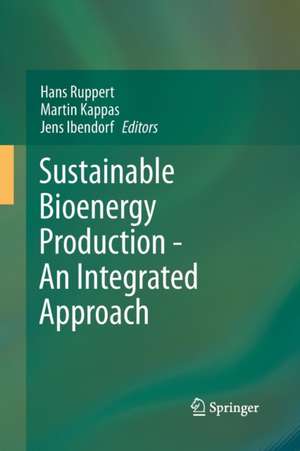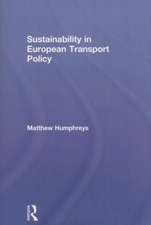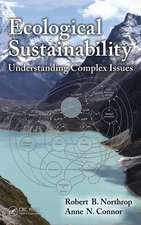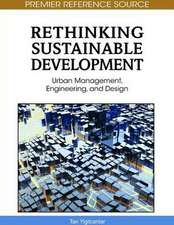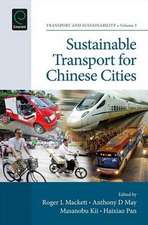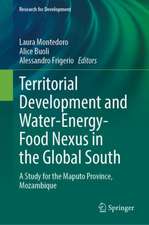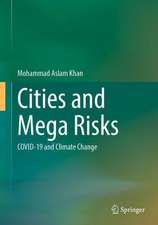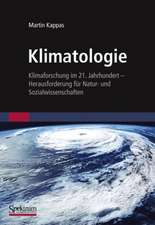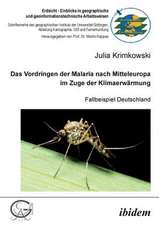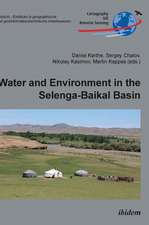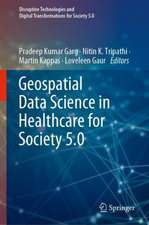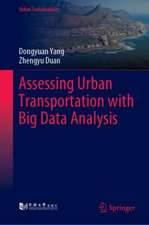Sustainable Bioenergy Production - An Integrated Approach
Editat de Hans Ruppert, Martin Kappas, Jens Ibendorfen Limba Engleză Paperback – 15 iul 2015
| Toate formatele și edițiile | Preț | Express |
|---|---|---|
| Paperback (1) | 952.57 lei 6-8 săpt. | |
| SPRINGER NETHERLANDS – 15 iul 2015 | 952.57 lei 6-8 săpt. | |
| Hardback (1) | 966.27 lei 6-8 săpt. | |
| SPRINGER NETHERLANDS – 3 iul 2013 | 966.27 lei 6-8 săpt. |
Preț: 952.57 lei
Preț vechi: 1161.67 lei
-18% Nou
Puncte Express: 1429
Preț estimativ în valută:
182.32€ • 187.89$ • 153.92£
182.32€ • 187.89$ • 153.92£
Carte tipărită la comandă
Livrare economică 01-15 martie
Preluare comenzi: 021 569.72.76
Specificații
ISBN-13: 9789400799707
ISBN-10: 9400799705
Pagini: 468
Ilustrații: XVI, 451 p. 111 illus., 81 illus. in color.
Dimensiuni: 155 x 235 x 25 mm
Greutate: 0.65 kg
Ediția:Softcover reprint of the original 1st ed. 2013
Editura: SPRINGER NETHERLANDS
Colecția Springer
Locul publicării:Dordrecht, Netherlands
ISBN-10: 9400799705
Pagini: 468
Ilustrații: XVI, 451 p. 111 illus., 81 illus. in color.
Dimensiuni: 155 x 235 x 25 mm
Greutate: 0.65 kg
Ediția:Softcover reprint of the original 1st ed. 2013
Editura: SPRINGER NETHERLANDS
Colecția Springer
Locul publicării:Dordrecht, Netherlands
Public țintă
GraduateCuprins
Part I: Setting the scene.- Part II: Do we have enough? - Biomass potentials for energy generation.- Part III: Can bioenergy production be environmentally sound?.- Part IV: Economic optimisation of bioenergy production.- Part V: Bridging bioenergy production and society.- Part VI: Combustion of biomass for heat and power.- Part VII: Bioenergy from polluted soils.- Index.
Recenzii
“This interdisciplinary book focuses on the use of agricultural land … on ecological, economic and societal impacts of these uses thus opening new trends in Sustainable Bioenergy Production. … Each contribution and the book as a whole give to the reader the strong feeling of an excellent scientific text … . this book is a very nice example to be followed for other scientific topics which aim to improve the quality of human life communities, in harmony with Planet Earth.” (Ioan I. Ardelean, Bulletin of Micro and Nanoelectrotechnologies, Vol. 6 (1-2), 2015)
“Editors/geoscientists Ruppert, Kappas, and Ibendorf (all, Univ. of Gӧttingen, Germany) have collaborated on a 14-chapter, seven-part volume exploring an integrated approach to bioenergy assessment. … the volume’s greater coverage of social issues and integration across sustainability dimensions will be welcome. … Summing Up: Recommended. Only comprehensive collections on energy resources, graduate students and above.” (B. D. Solomon, Choice, Vol. 51 (7), March, 2014)
“Editors/geoscientists Ruppert, Kappas, and Ibendorf (all, Univ. of Gӧttingen, Germany) have collaborated on a 14-chapter, seven-part volume exploring an integrated approach to bioenergy assessment. … the volume’s greater coverage of social issues and integration across sustainability dimensions will be welcome. … Summing Up: Recommended. Only comprehensive collections on energy resources, graduate students and above.” (B. D. Solomon, Choice, Vol. 51 (7), March, 2014)
Textul de pe ultima copertă
This book focuses primarily on the advantages and implications of sustainable bioenergy production in terms of ensuring a more sustainable world despite its growing energy demands.
It addresses a new concept that focuses on the interactions between different uses of agricultural land (for example, agriculture for food, forage or energy and nature conservation) and their ecological, economic and societal impacts. This research concept provides new insights into the competition for resources and the synergies between different land uses.
Until recently, the transition towards renewable energy has been generally misunderstood as only an economic demand, rather than as a means to gain various social and ecological advantages. Today biomass can be produced to generate energy and renewable raw materials, while simultaneously benefitting soil resources, water resources and biodiversity. The transition to a ‘greener’ economy is an important precondition in order to achieve the sustainable development of societies.
To develop a modern, forward-looking energy supply from biomass, such as biomass for heat and power generation, and liquid biofuels for transport, there should be a balance between the amount of biomass required for food production and for material purposes. Crop types, production methods and conversion technologies need to be matched with local conditions within the different landscapes to establish a national transformation plan, and to reduce the i
ncreasing land-use competition between food/fodder versus energy crop production, as well as the use of forests for energy. Rethinking the linkages between bioenergy, climate change, land use and water requires an integrated assessment of the energy, land and water nexus.
This book highlights research aimed at providing an integrated approach to sustainable bioenergy development and seeks to improve people’s understanding of bioenergy’s potentials for the future. It will be of interest not only to those involved in sustainable energy, but also to environmental planners, agriculture and soil specialists, and environmental policy-makers.
It addresses a new concept that focuses on the interactions between different uses of agricultural land (for example, agriculture for food, forage or energy and nature conservation) and their ecological, economic and societal impacts. This research concept provides new insights into the competition for resources and the synergies between different land uses.
Until recently, the transition towards renewable energy has been generally misunderstood as only an economic demand, rather than as a means to gain various social and ecological advantages. Today biomass can be produced to generate energy and renewable raw materials, while simultaneously benefitting soil resources, water resources and biodiversity. The transition to a ‘greener’ economy is an important precondition in order to achieve the sustainable development of societies.
To develop a modern, forward-looking energy supply from biomass, such as biomass for heat and power generation, and liquid biofuels for transport, there should be a balance between the amount of biomass required for food production and for material purposes. Crop types, production methods and conversion technologies need to be matched with local conditions within the different landscapes to establish a national transformation plan, and to reduce the i
ncreasing land-use competition between food/fodder versus energy crop production, as well as the use of forests for energy. Rethinking the linkages between bioenergy, climate change, land use and water requires an integrated assessment of the energy, land and water nexus.
This book highlights research aimed at providing an integrated approach to sustainable bioenergy development and seeks to improve people’s understanding of bioenergy’s potentials for the future. It will be of interest not only to those involved in sustainable energy, but also to environmental planners, agriculture and soil specialists, and environmental policy-makers.
Caracteristici
Provides an integrated approach to sustainable bioenergy development Illuminates how to avoid conflicts regarding bioenergy production Provides decision support for a further extension of bioenergy on the local and regional scale Illustrates how to apply sustainability-science principles in villages and districts Includes supplementary material: sn.pub/extras
